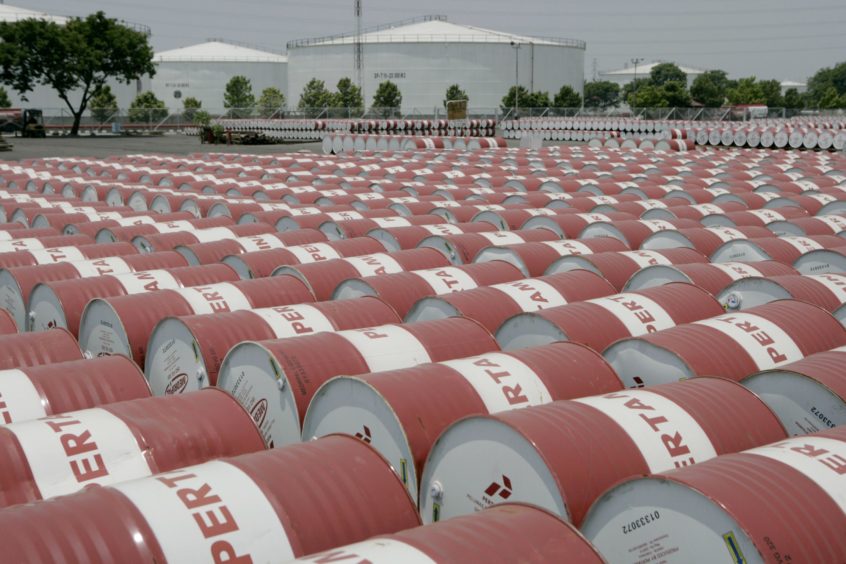
Asia’s uneven oil demand recovery has been headlined by China and India, but the Covid-19 comeback that’s swept through other key fuel-consuming nations is complicating a return to pre-pandemic levels.
It’s a flare-up that’s had varying impacts, according to May manufacturing and traffic data. Driving and industrial activity in Japan was robust, despite a state of emergency, while Malaysia fared poorly amid its virus wave, missing out on a typical seasonal boost. Indonesian fuel demand was strong and Australia has managed to see off the worst of pandemic-related disruptions.
The biggest drag on overall gasoline and diesel demand remains India, but there are emerging signs that the recovery is underway across Asia.
China has been Asia’s standout, with its rapid rebound from Covid-19 helping to underpin a global recovery and a surge in oil prices. The world’s biggest oil importer has managed to swiftly contain localised flare-ups, giving its citizens the confidence to commute to work and vacation across the nation. The rise in mobility has driven motor fuel prices back to pre-pandemic levels.
“Asia is already at the nadir of the Covid-19 resurgence,” said Sandy Kwa, a senior oil market analyst at industry consultant FGE, adding that China is leading the gasoline rebound. “The biggest stumbling block to Asia’s demand recovery is India.
Here’s a more detailed look at some key Asian markets outside of China.
India
The second virus wave in India has crippled fuel consumption and paralysed the nation’s health care system. Gasoline and diesel sales tumbled in May from a month earlier, while mobility data from Apple Inc. indicated driving averaged 57% of pre-virus levels in January 2020. Factory activity also slowed.
FGE predicts Indian gasoline demand will slide by about 150,000 barrels a day from the first three months of the year to average 590,000 barrels during the second quarter. However, the rate of new infections fell to the lowest in two months on Tuesday, while refiners are taking advantage of the decline in consumption to undergo maintenance in anticipation of a demand revival.
Malaysia
The virus flare-up in Malaysia led to tighter restrictions and crimped a seasonal gain in driving that’s usually seen during Ramadan. Mobility in May was 78.5% of pre-virus levels, according to Apple data, compared with 97% in April. Factory activity also contracted last month. The nation has imposed a nationwide lockdown until mid-June.
Diesel consumption and factory activity are expected to be impacted by the lockdown, which is worsening labor shortages. However, transportation fuels may get a near-term boost as vaccinations accelerate, according to Kendrick Wee, director at IHS Markit.
Indonesia
Unlike Malaysia, gasoline and diesel consumption in Indonesia during May lifted demand to about 4-5% below pre-pandemic levels, according to Pertamina Patra Niaga, a unit of the nation’s biggest oil refiner and retailer PT Pertamina. That seasonal jump coincided with Ramadan, but demand is expected to ease in June.
Driving was above pre-pandemic levels last month, according to Apple data, and factory activity rose from April. Virus restrictions have had a limited impact on industrial activities, said FGE.
Japan and South Korea
Japan is facing a double dip recession after a state of emergency was extended to June 20, although driving activity in May was above pre-pandemic levels and industrial production only eased slightly from the previous month. The nation’s refiners have also maintained strong buying of crude recently.
In South Korea, driving was at about 69% of pre-virus levels in May and manufacturing activity dipped for a second straight month after clawing its way back from the worst impacts of Covid-19.
Australia
Australia’s economy rebounded strongly in the first quarter after the nation was able to limit the impact of Covid-19 through strict lockdowns, while the closure of outdated refineries has resulted in an importing spree this year. That’s provided some support to regional fuel margins and refiners. Driving has been at pre-pandemic levels since November, according to Apple data.
The lockdowns in smaller economies are unlikely to weigh heavily on the global demand picture, according to Dominic Schnider, head of commodities and Asia-pacific foreign exchange at UBS Global Wealth Management. Outside of China, consumption of oil products across the broader Asia region is expected to climb by 14 million barrels a day in the second quarter.